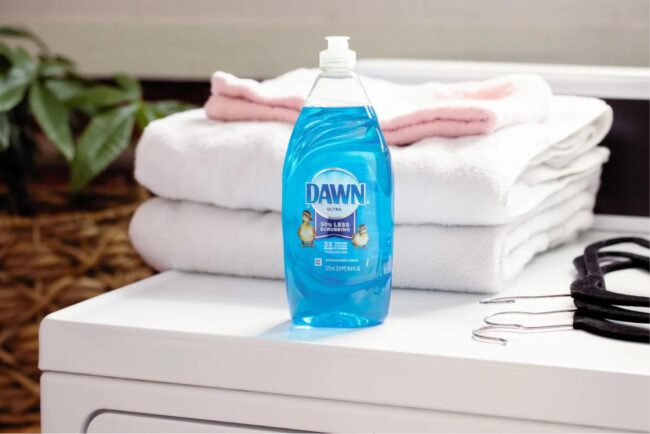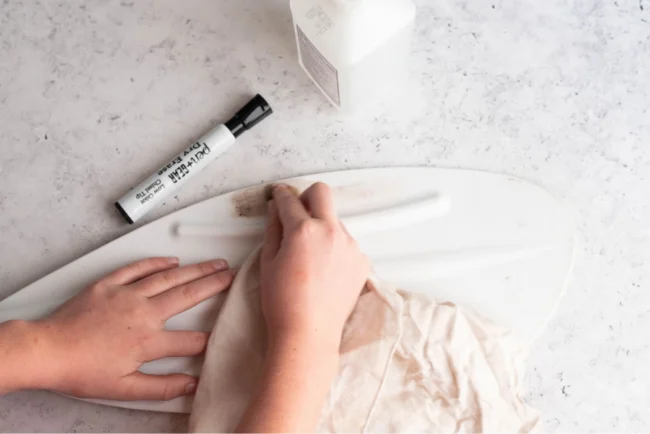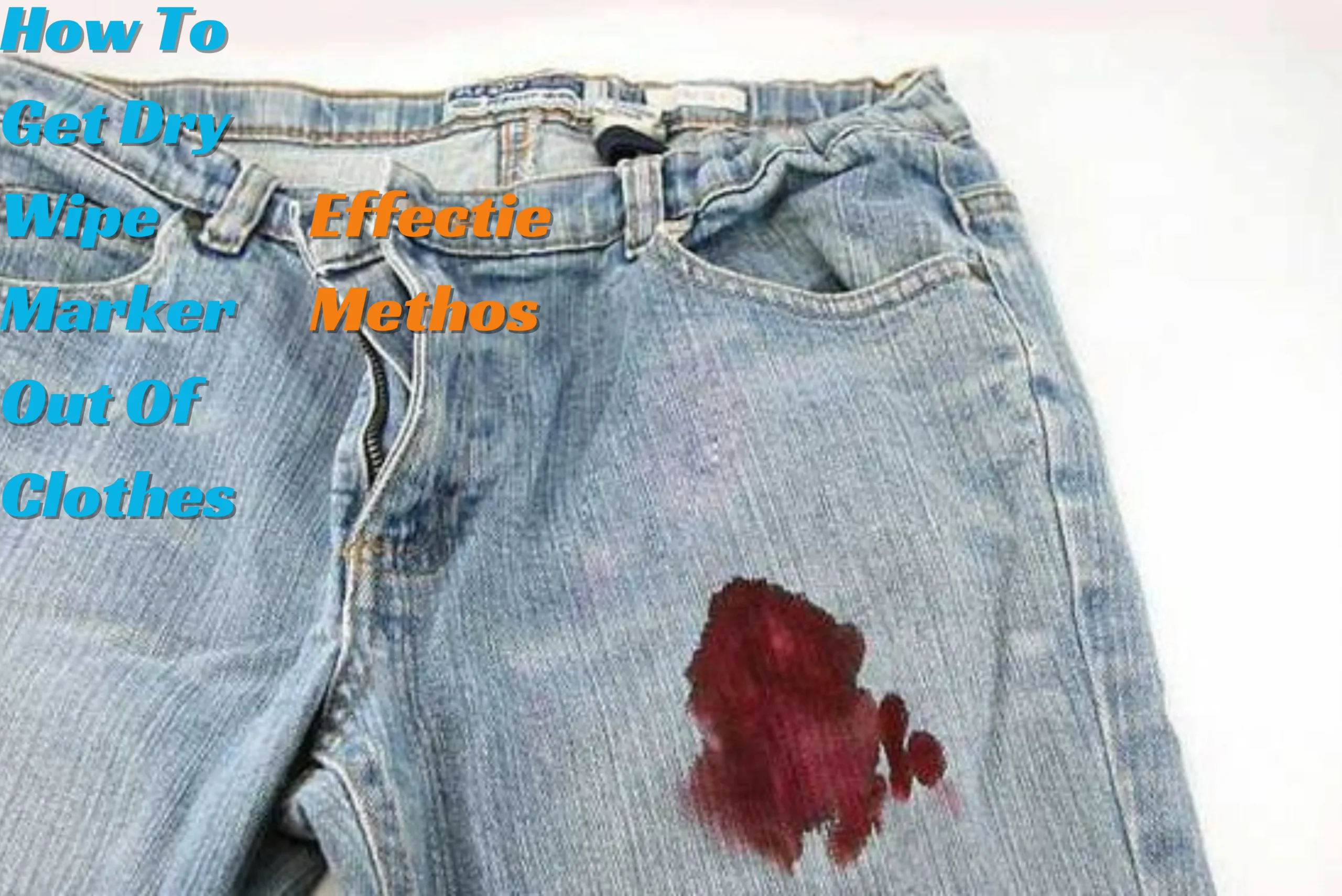Table of Contents
ToggleExpert Tips for Removing Stubborn Dry Wipe Marker Stains
Discover how to remove dry wipe markers off clothing with the help of professionals. Use mild agitation techniques, evaluate the stain’s efficacy before reapplying cleaning products, and think about prolonged soaking for stains that are difficult to remove. When attempting to remove stains, be persistent and patient, and if necessary, look into other options. Finally, take preventative action by handling dry wipe markers carefully and storing them appropriately to avoid stains in the future.
Although dry wipe markers are great for marking whiteboards and other surfaces, they may sometimes leave stains on garments that are difficult to remove. Whether it’s from lighthearted mishaps or unintentional touch, these stains may be difficult to remove. Don’t worry, there are efficient ways to deal with this problem and bring your clothes back to life.
Importance Of Knowing How To Remove Dry Wipe Marker Stains
For a number of reasons, it’s critical to understand how to erase dry wipe marker marks. First of all, dry wipe markers are often utilized in a variety of locations, including homes, workplaces, and schools. Unintentional spills or stains on clothes might occur at any moment, particularly in settings where these markers are often used. Knowing how to get rid of these stains successfully makes sure that accidents like these don’t cause clothes to become permanently damaged.
Furthermore, stains left by dry wipe markers may be unsightly and difficult to remove. If left untreated, they might grow more difficult to remove and set in, thereby destroying the afflicted clothing. Understanding the proper stain removal methods will help you avoid having to replace clothes too soon, which can save you time, money, and stress.
Additionally, learning how to get rid of dry wipe marker stains encourages ingenuity and independence. Instead of throwing away soiled clothes or depending on pricey professional cleaning services, people may take things into their own hands and effectively resolve the problem on their own.
Understanding Dry Wipe Marker Stains
Usually, a blend of pigments, solvents, and binding agents are used in dry wipe markers. The pigments in these markers have the ability to stick to cloth fibers, leaving stains that are not very attractive. The kind of cloth, the color of the marker, and how soon you respond are some of the variables that affect how well stains may be removed.
Composition Of Dry Wipe Markers
Dry erase markers, sometimes called dry erase markers made of white clothes, usually include a few essential parts that allow them to write smoothly on non-porous surfaces like whiteboards. The following are the main parts of dry wipe markers:
Pigments: The pigments in dry wipe markers give the ink its color. Particles of finely powdered pigment suspended in a liquid solvent make up these pigments. Black, blue, red, green, and all of their gradations are common hues.
Solvents: The marker ink’s liquid component, solvents, aid in maintaining the pigments’ uniform dispersion and fluidity. When these solvents are exposed to air, they swiftly evaporate, causing the ink on non-porous surfaces—like whiteboards—to dry virtually instantaneously.
Binding agents are chemicals that assist the ink stick to the whiteboard’s surface without spreading or smudging. They guarantee that the ink dries rapidly and adheres to the surface in a strong, non-permanent manner.
Additives: In order to enhance performance and longevity, dry wipe marker ink may additionally include extra additives. Preservatives to extend shelf life, scents to improve user experience, and surfactants to promote ink flow are a few examples of these additions.
Factors Influencing Stain Removal
The effectiveness of removing dry wipe marker stains from garments depends on a number of things. Comprehending these elements is essential for efficiently addressing stains and returning clothing to its initial state. Among the crucial elements are:
Type of Fabric:
Various textiles respond to stain cleaning methods in various ways. While synthetic materials like polyester and nylon could be more resistant to certain cleaning chemicals, natural fibers like cotton and wool might be more absorbent. To prevent causing harm to the clothing, the kind of fabric must be taken into account while selecting a stain removal technique.
Color of Marker:
The stain cleaning process may be impacted by the dry wipe marker’s hue. It might be harder to remove darker hues like blue or black than brighter ones like red or green. Additionally, certain marker pigments could have chemicals or dyes added to them that affect how soluble they are in cleaning solutions.
Duration Since Stain Appeared:
To successfully remove the stain, prompt action is essential. Set-in stains that have had time to dry and seep into the fabric fibers are often more difficult to remove than fresh stains. Timely intervention may help save the stain from being more difficult to remove.
Pre-Medication Techniques:
Using the right cleaning solutions to pretreat the stain may greatly increase how well it removes. Depending on the kind of stain and the fabric in question, many pre-treatment techniques, such as blotting with a clean cloth, using stain remover, or soaking in a solution, may be advised.
Water’s Temperature:
The effectiveness of stain removal might be affected by the temperature of the water used. Hot water may set the stain deeper into the fabric, therefore it’s generally best to cure Dry Erase Marker Come Out Of Clothes with cool water. It is possible to avoid making the stain worse throughout the washing procedure by using the proper water temperature.
Cleaning Agent Type:
Dry wipe marker stains may be removed using a variety of cleaning solutions, including over-the-counter stain removers and home methods like vinegar or rubbing alcohol. A number of variables, including fabric sensitivity, stain intensity, and personal preference, influence the cleaning chemical selection. To identify the best answer, it could be essential to try out a few various approaches.
Rapid Action Items
Moving quickly is essential for good stain removal. Blotting the stained area with a fresh cloth as soon as you see the stain will help to absorb as much of the marker ink as possible. Refrain from rubbing as this could exacerbate the stain. To release the pigment, immerse the clothing in cold water for a few minutes.
Blotting And Soaking
Two first procedures that work well for getting rid of dry wipe marker stains on clothes are blotting and soaking. These easy-to-follow yet essential treatments may help stop the stain from penetrating the fabric further and get it ready for more thorough cleaning procedures. This is the proper way to soak and blot a dry wipe marker stain:
Blotting:
Use a fresh, dry cloth or paper towel to gently wipe the stained area as soon as you become aware of the stain. Removing the stain by rubbing it off can help it to spread and may cause harm to the fabric. Rather, apply pressure on the stain to ensure that as much ink is absorbed as possible. Blotting should be done until the fabric is clean of any remaining ink.
soaking
It’s crucial to soak the discolored clothing in cold water after blotting. Pour cold water into a sink or basin, then fully immerse the affected area. To aid in removing any last traces of color from the fabric fibers, let the item soak for at least fifteen to thirty minutes. To improve the cleaning process for really difficult stains, dilute a tiny quantity of mild detergent or stain remover in the water.
Optional Agitation:
After soaking, you may use a soft-bristled brush or gently touch the cloth to agitate the stain if it still appears. Avoid being too harsh, particularly when handling delicate clothes, as this may cause the fibers to get damaged. Till the stain begins to come off the cloth, keep agitating.
Cleaning:
After using blotting and soaking techniques to cure the stain, thoroughly rinse the clothing with cold water to get rid of any leftover ink and cleaning solution. Before moving on to the next stage of the stain removal procedure, make sure the affected area is free of any traces of ink.
Using Dish Soap
- Another efficient way to get rid of dry wipe marker stains on clothes is to use dish soap. Dish soap works effectively for dissolving marker ink pigments and removing them from cloth fibers since it is designed to cut through grease and filth. Here’s how to treat a dry wipe marker stain with dish soap:
- Preparation: Blotting the damaged area with a clean, dry cloth or paper towel is crucial to removing as much of the ink as possible before using the dish soap. By doing this, you may stop the stain from becoming worse while cleaning.
- Application: Wet the affected area with cold water after blotting away any excess ink. Next, directly apply a little quantity of liquid dish soap to the discoloration. Focusing on the stained sections of the cloth, gently massage the soap into it with your fingertips or a soft-bristled brush.
- Allowing it to rest: To permeate the cloth and dissolve the pigments in the stain, let the dish soap rest on it for a few minutes after applying it. The ink is loosened and made simpler to remove throughout the rinse process thanks to this soaking period.
- Rinsing: Give the clothing a good rinse with cold water when the dish soap has had a chance to do its job. Rinse the cloth well to ensure that all traces of soap and ink are gone. Examine the discolored area to see if the ink has come off the cloth.
- If Needed, Repeat: You may need to carry out the procedure again in order to thoroughly remove the stain if it doesn’t go away after the initial dish soap application. Remember that certain stains could take many treatments to completely go away, so be persistent and patient.
- Laundering: To guarantee that the item is clean and odor-free, wash it as normal after using dish soap to properly remove the stain.

Although eliminating mold and dry wipe marker stains from garments may not be directly related, both procedures include stain treatment. Blotting, pre-treating with stain remover, and washing with laundry detergent are useful techniques for removing dry wipe marker stains. In a similar vein, washing with detergent, soaking in a cleaning solution, and drying in the sun are the steps involved in getting rid of mold from clothing. Even when different materials and methods are used, the end result is always the same: clean, usable clothes.
Natural Remedies for Dry Wipe Marker Stains
- Vinegar Solution: Apply a solution made of equal parts white vinegar and water to the discoloration. After a few minutes, let it set before washing it normally.
- Rubbing Alcohol: Use a cotton ball dipped in rubbing alcohol to dab the stain. Without Rubbing Alcohol, You Can Remove Dry Erase Markers From Clothes: The alcohol helps dissolve the pigments, which makes them simpler to remove.
Using Commercial Stain Removers
Commercial stain removers may help if natural methods are unsuccessful. Before using laundry detergent to wash the clothing, use a pre-treatment stain remover directly on the spot and let it rest for a few minutes. For optimal results, make sure you adhere to the manufacturer’s recommendations.
Pre-treating With Stain Remover
Using a stain remover first can help break down the pigment in the dry wipe marker stain and get the cloth ready for washing. Stain removers are an important instrument in the stain removal process since they are specially made to target and lift stubborn spots. Here’s how to use a stain remover to pre-treat a dry wipe marker stain:
Choosing a Stain Remover: Make sure the stain remover you choose is appropriate for both the kind of cloth and the stain you’re trying to remove. Seek for a product that has the statement “effective against ink stains and safe for use on clothing.”
Spot Testing: To make sure the stain remover is compatible and to guard against any possible damage, it’s a good idea to spot test it on a tiny, discrete part of the cloth before applying it to the whole damaged area. Prior to continuing, spot test as directed by the manufacturer and note any negative responses.
Application: Apply the stain remover straight to the dry wipe marker stain after making sure it’s safe to use. Concentrating on the impacted areas, gently rub the stain remover into the fabric using the applicator tip or a clean cloth. For a complete treatment, make sure the product covers the whole discoloration.
Permeating the Fabric: Give the stain remover time to do its job once you’ve applied it. You may need to let it stay for a few minutes to give the active components time to break down the pigment and release it from the fibers, depending on the product and the intensity of the stain.
Blotting or Rubbing: After the stain remover has had time to act, blot the affected area with a fresh, dry cloth or paper towel. Removing the stain from the cloth by not touching it might help it spread. Rather, apply gentle pressure on the stain in order to absorb the cleaning solution and released pigment.
Rinsing: Use cold water to completely rinse the clothing after removing as much of the stain remover and pigment as you can. Rinse the cloth again until the water runs clear and the stain remover and ink are completely removed.
Examining the Stain: Following rinsing, determine if the dry wipe marker stain has been effectively eliminated by looking at the stained area. You may need to repeat the pre-treatment procedure or attempt other stain removal techniques if there are still residues of the stain.
Find out how to remove whiteboard markers off clothing in the UK effectively. Find techniques designed to efficiently combat stains and return your clothes to its original form, from mild blotting and pre-treating with stain remover to washing with laundry detergent.
Washing With Laundry Detergent
The last step in getting rid of dry wipe marker stains from clothes is to wash the item with laundry detergent. In addition to refreshing and whitening the fabric, laundry detergent is designed to remove filth, grime, and stains from fabric fibers.
Get ready:
Make sure the laundry detergent you’ve chosen is suitable before you wash the soiled clothing. Select a detergent that works well with your chosen washing machine and is appropriate for the sort of cloth you want to use.
Disturbance:
Consider washing the article of clothing with the dry wipe marker stain separately from other things to avoid any damage or stain transfer to other clothes, especially if the garment is made of fragile fabric if the stain is very tenacious.
Filling the Laundry Cart:
Following the manufacturer’s directions, load the soiled clothing into the washing machine and add the necessary quantity of laundry detergent. While washing, use cold water since hot water might cause the stain to seep further into the cloth.
Choosing the Laundry Cycle:
Select a mild washing cycle based on the kind of cloth used for the item. For fragile materials in particular, stay away from utilizing high-speed spin cycles or severe agitation to avoid possibly damaging the fabric’s fibers.
Activating the Laundry Cycle:
Let the cycle finish after starting the washing machine. The dry wipe marker stain will be removed from the fabric fibers by the washing detergent, which will also clean the whole clothing.
Examining the Area Spotted:
Once the washing cycle has over, take the clothing out of the machine and look over the discolored area. Proceed with drying the item as normal if the stain has been effectively removed. Consider repeating the pre-treatment and washing steps or using other stain removal techniques if there are still residues of the stain.
Desiccating:
After you’re satisfied with how the stain has been removed, dry the clothing following the fabric label’s care recommendations. For fragile textiles, air drying is usually advised; however, machine drying on a low heat setting could work for stronger materials.
Dry wipe marker stains can be successfully removed from clothing and the fabric may be left clean and smelling fresh by washing it with laundry detergent. This last stage of stain removal helps return the clothing to its natural state so that it is ready for wearing.

Tips For Stubborn Stains
A little more care may be needed for some dry wipe marker stains. Repeat the treatment procedure until the stain is removed if it still exists after the first try. Don’t quit up even if it may need some perseverance and patience—the outcomes will be worthwhile.
Repeated Treatment
Dry wipe marker stains that are difficult to remove after washing may need repeated treatments. Sometimes, even with your best efforts, the stain may not go away after the first treatment or it may only go partly away. In these situations, stain removal may be progressively removed by repeating the procedure, which helps break down the pigment even more. Here’s how to cure dry wipe marker stains repeatedly and effectively:
| Step | Description |
|---|---|
| Assessment | Evaluate the effectiveness of initial stain removal efforts. Determine if the stain has faded, partially lifted, or remained unchanged. |
| Reapplication of Cleaning Agents | If the stain persists, reapply the chosen cleaning agent or stain remover, ensuring compatibility with the fabric type. |
| Extended Soaking | Consider extending soaking time in cold water or cleaning solution to break down pigment further and loosen it from fibers. |
| Gentle Agitation | Gently agitate the fabric during soaking or application of cleaning agents to aid in stain removal without causing damage. |
| Patience and Persistence | Be patient and persistent in repeating the treatment process as necessary, allowing time for cleaning agents to work. |
| Alternative Methods | Explore alternative stain removal methods or products if initial attempts yield limited results. |
| Professional Assistance | Seek professional help from a dry cleaner or textile expert for stubborn stains that resist treatment at home. |
| Preventive Measures | Exercise caution when using dry wipe markers near clothing. Keep markers capped when not in use, store them upright, and be mindful of placement to prevent leaks and spills. |
Being Cautious While Using Dry Wipe Markers
It’s important to use caution while using dry wipe markers to avoid unintentionally staining clothes and other materials. If not handled correctly, the pigmented ink in these markers may readily transfer onto fabric surfaces and leave ugly stains. The following advice may help you use care while using dry wipe markers:
Put on protective gear:
When using dry wipe markers, think about donning an apron or old clothes that you don’t mind being soiled. This adds another degree of defense against unintentional spills or splatters.
Shield Adjacent Surfaces:
Take care to cover or shield any places that may come into contact with clothes or fabric surfaces while using dry wipe markers. To avoid unintentional contact, place a barrier—such as a paper towel or a protective pad—between the marker and the cloth.
When the marker is not in use, cap it.
When the marker is not in use, always remember to screw on the cap securely. By doing this, the chance of ink drying out and spills or leaks occurring by mistake is decreased.
Keep Store Markers Aligned:
Dry wipe markers should be kept upright to reduce the possibility of spills or leaks. The risk of ink leaking might be increased if they are stored horizontally or upside down.
Treat with Caution:
When using dry wipe markers, handle them carefully to prevent losing them or using too much pressure. When a marker is handled roughly, it may leak or spatter, leaving stains on adjacent surfaces.
Eliminate spills right away:
Take prompt action to wipe up spills and stains before they have a chance to set. Blot the stain gently with a clean cloth or paper towel, being careful not to spread it.
Test in a Limited Space:
To be sure they won’t harm or stain fabric surfaces, try dry wipe markers on a tiny, discrete area before using them on larger surfaces. This enables you to determine if the marker and the cloth are compatible before moving on.
Pay Attention to Your Clothes:
When using dry wipe markers, be mindful of how close your clothes is near the marker. When using markers, avoid rubbing or leaning against the surface to avoid inadvertent contact and stains.

Storing Markers Properly
It’s crucial to store dry wipe markers correctly to preserve their quality and avoid unintentional spills or leaks that might cause stains on clothes or other surfaces. In addition to extending the markers’ lifetime, proper storage lowers the chance of the ink drying out or evaporating too soon. The following are some useful storage suggestions for dry wipe markers:
Hold Them Closed:
When the markers are not in use, always be sure to cap them tightly. This keeps the ink from drying out and contributes to the long-term preservation of the markers’ writing quality. To reduce the possibility of spills or leaks, make sure the caps are securely closed.
Keep upright:
To stop ink from collecting or seeping out of the marker tip, store dry wipe markers upright. This also lessens the possibility of air bubbles developing, which may impair writing ability, and helps disperse the ink inside the marker more evenly.
Employ a Pen Holder:
To ensure that your dry wipe markers are always in order and easily accessible, think about investing in a dedicated marker container or organizer. Marker holders provide a handy way to store several markers while also preventing the markers from sliding off surfaces.
Steer clear of extreme temperatures:
Dry wipe markers should not be exposed to very high or low temperatures, such as freezing temperatures, direct sunlight, or heat sources. excessive cold or heat may cause the ink to thicken or become less fluid, while excessive heat can cause the ink to expand and spill.
Keep in a Dry, Cool Environment:
Dry wipe markers should be kept out of the heat and moisture in a cool, dry location. Elevated relative humidity may dilute or liquefy the ink, reducing its writing quality and raising the possibility of spills.
Examine any damage:
Check the markers from time to time for deterioration indicators like frayed tips or fractures. Markers that are damaged are more likely to leak or spill, so it’s critical to replace them right away to avoid mishaps.
Keep Them Apart from Pets and Children:
Dry wipe markers should be kept out of the reach of kids and animals to avoid abuse or unintentional consumption. To prevent possible safety issues, make sure that inquisitive hands or paws cannot reach the storage spot.












